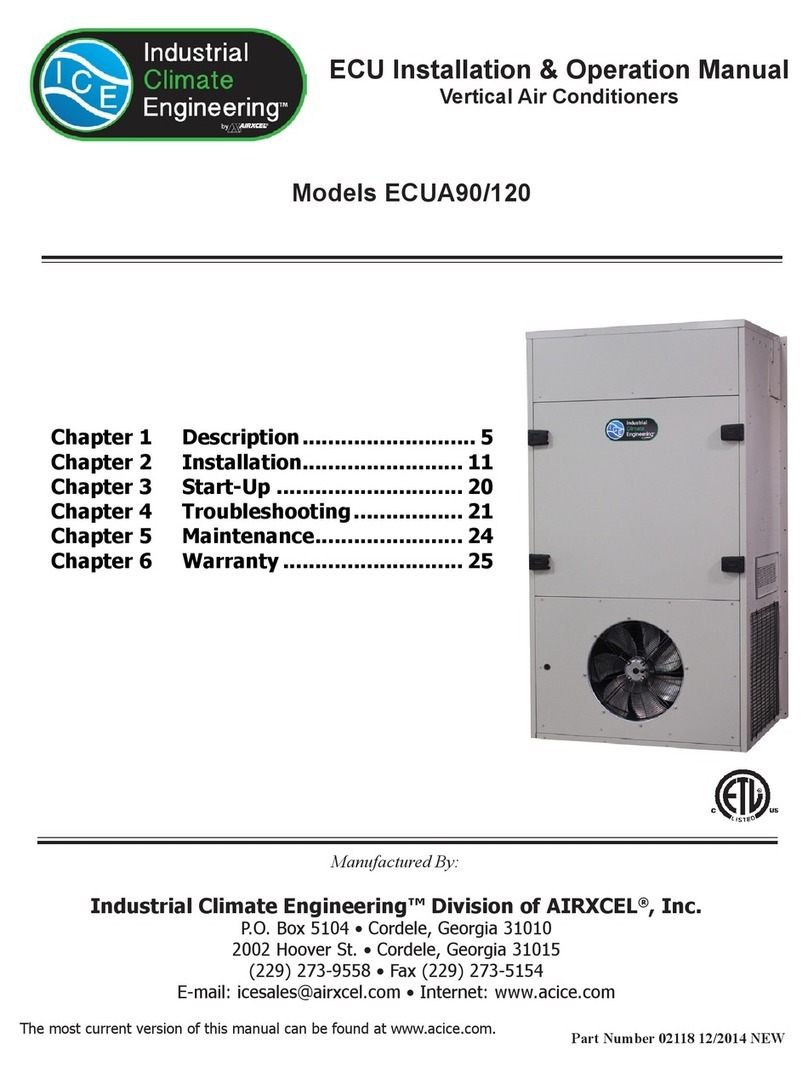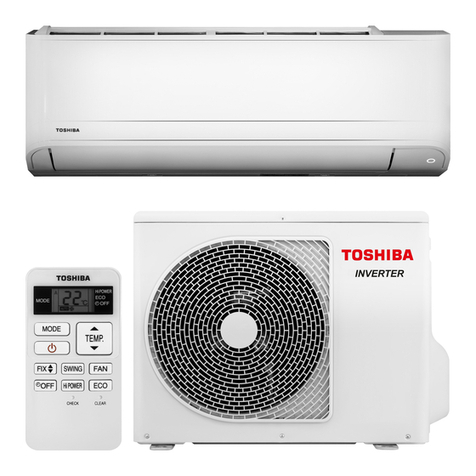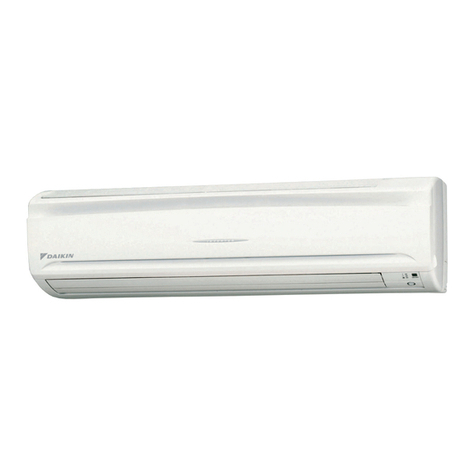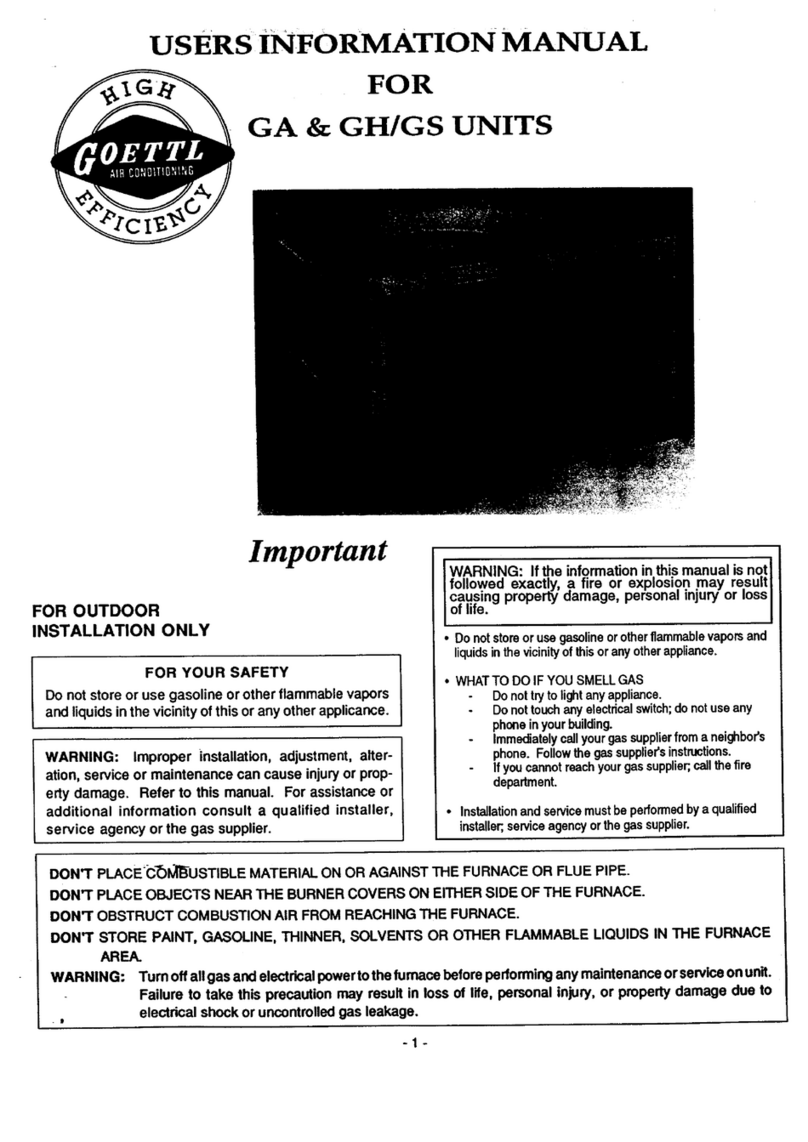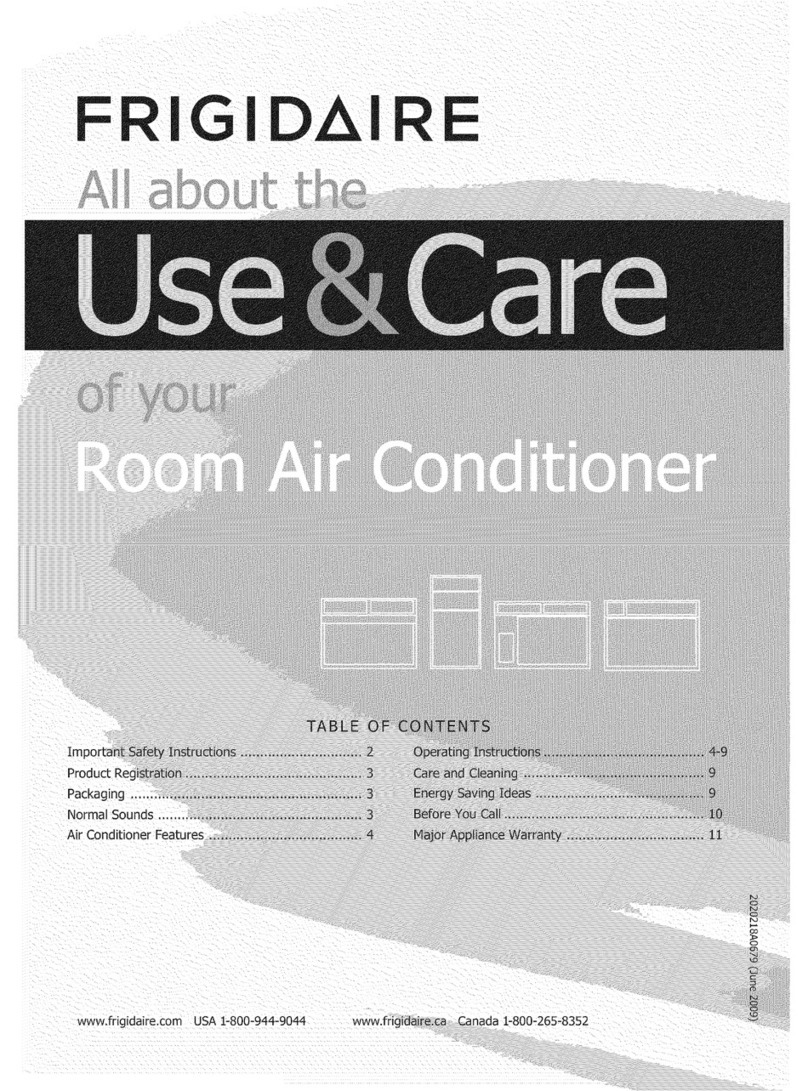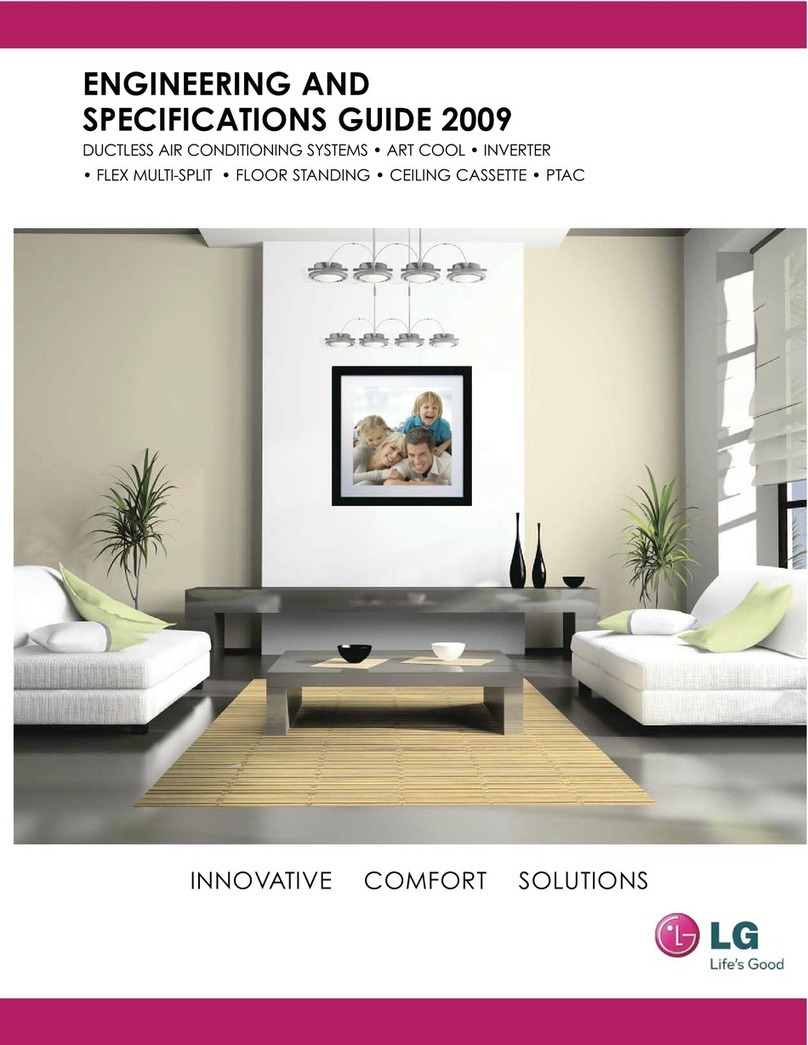Industrial Climate Engineering SlimPac ECUA12 User manual

ICE SlimPac ECUA12-18 I&O Manual 03/2019 Rev.2
Part Number 01706
Chapter 1 Description................................. 5
Chapter 2 Installation............................... 14
Chapter 3 Start-Up ................................... 20
Chapter 4 Troubleshooting ....................... 21
Chapter 5 Maintenance............................. 24
Chapter 6 Warranty .................................. 25
Chapter 7 Exploded View Parts List.......... 26
ECU Installation & Operation Manual
Vertical Air Conditioners
Models SlimPac ECUA12-18
Manufactured By:
Industrial Climate Engineering™ Division of AIRXCEL®, Inc.
P.O. Box 5104 • Cordele, Georgia 31010
2002 Hoover St. • Cordele, Georgia 31015
(229) 273-9558 • Fax (229) 273-5154
The most current version of this manual can be found at www.acice.com.
ECUA12 ECUA18

2
ICE SlimPac ECUA12-18 I&O Manual 03/2019 Rev.2
How To Use This Manual
This manual is intended to be a guide to Industrial Climate Engineering's line of vertical air conditioners. It contains
installation, troubleshooting, maintenance, warranty, and application information. The information contained in this
manual is to be used by the installer as a guide only. This manual does not supersede or circumvent any applicable
national or local codes.
If you are installing the air conditioner rst read Chapter 1 and scan the entire manual before beginning the installation as
described in Chapter 2. Chapter 1 contains general, descriptive information and provides an overview which can speed
up the installation process and simplify troubleshooting.
If a malfunction occurs, follow this troubleshooting sequence:
1. Make sure you understand how the air conditioner works (Chapters 1 & 3).
2. Identify and correct installation errors (Chapter 2).
3. Refer to the troubleshooting information in Chapter 4.
If you are still unable to correct the problem, contact the Factory at 1-229-273-9558 for additional assistance.
Please read the following “Important Safety Precautions” before beginning any work.
Important Safety Precautions
1. USE CARE when LIFTING or TRANSPORTING equipment.
2. TRANSPORT the UNIT UPRIGHT. Laying it down on its side may cause oil to leave the compressor and breakage
or damage to other components.
3. TURN ELECTRICAL POWER OFF AT THE breaker or fuse box BEFORE installing or working on the equipment.
LINE VOLTAGES ARE HAZARDOUS or LETHAL.
4. OBSERVE and COMPLY with ALL applicable PLUMBING, ELECTRICAL, and BUILDING CODES and ordi-
nances.
5. SERVICE may be performed ONLY by QUALIFIED and EXPERIENCED PERSONS.
* Wear safety goggles when servicing the refrigeration circuit
* Beware of hot surfaces on refrigerant circuit components
* Beware of sharp edges on sheet metal components
* Use care when recovering or adding refrigerant
6. Use COMMON SENSE - BE SAFETY-CONSCIOUS
This is the safety alert symbol . When you see this symbol on the air conditioning unit and in the instruction
manuals be alert to the potential for personal injury. Understand the signal word DANGER, WARNING and
CAUTION. These words are used to identify levels of the seriousness of the hazard.
DANGER Failure to comply will result in death or severe personal injury and/or property damage.
WARNING Failure to comply could result in death or severe personal injury and/or property damage.
CAUTION Failure to comply could result in minor personal injury and/or property damage.
IMPORTANT Used to point out helpful info that will result in improved installation, reliability or operation.
© 03/2019 Industrial Climate Engineering™ Div. Airxcel™, Inc.
SPECIFICATIONS SUBJECT TO CHANGE WITHOUT NOTICE.

3ICE SlimPac ECUA12-18 I&O Manual 03/2019 Rev.2
WARNING
• If the information in these instructions are not followed exactly, a re may result
causing property damage, personal injury or loss of life.
• Read all instructions carefully prior to beginning the installation. Do not begin
installation if you do not understand any of the instructions.
• Improper installation, adjustment, alteration, service or maintenance can cause
property damage, personal injury or loss of life.
• Installation and service must be performed by a qualied installer or service agency in
accordance with these instructions and in compliance with all codes and requirements
of authorities having jurisdiction.
INSTALLER: Afx the instructions on the inside of the building adjacent to the
thermostat.
END USER: Retain these instructions for future reference.
Table of Contents
Chapter 1 Air Conditioner Description & Specications
1.1 General Description .................................................................................................................................5
1.2 Model Identication .................................................................................................................................5
1.3 Serial Number Date Code ........................................................................................................................5
1.4 Electrical Data and Performance Data .....................................................................................................6
1.5 General Operation ....................................................................................................................................6
1.6 Electrical Diagrams..................................................................................................................................9
1.7 Electronic Control Board Mode of Operation........................................................................................12
Chapter 2 Installation
2.1 Equipment Inspection.............................................................................................................................14
2.2 Installation Requirements.......................................................................................................................14
2.3 Installation Materials ............................................................................................................................15
2.4 Porting and Duct Work ..........................................................................................................................16
2.5 Air Flow Requirements and Ducting ....................................................................................................16
2.6 Bottom Bracket Installation ...................................................................................................................17
2.7 Condenser Blower Orientation...............................................................................................................18
2.8 Mounting the Unit .................................................................................................................................18
2.9 Electrical Connections ...........................................................................................................................18
Chapter 3 Start-Up
3.1 Check-Out of Cooling Cycle .................................................................................................................20
3.2 Check-Out of Heating Cycle..................................................................................................................20
3.3 Check-Out of High Temp. Alarm and/or Gas Detection Device............................................................20
Chapter 4 Troubleshooting
4.1 Overview ................................................................................................................................................21
4.2 Failure Symptoms Guide........................................................................................................................21
4.3 Compressor Troubleshooting .................................................................................................................22

4
ICE SlimPac ECUA12-18 I&O Manual 03/2019 Rev.2
Table of Contents
Chapter 5 Maintenance
5.1 Scheduled Maintenance .........................................................................................................................24
Chapter 6 Warranty
6.1 Airxcel Commercial/Industrial Group Limited Product Warranty.........................................................25
Chapter 7 Start-Up Check List
7.1 Start-Up Check List................................................................................................................................26
Illustrations
Figure 1a. Dimensional Data - ECUA12................................................................................................... 7
Figure 1b. Dimensional Data - ECUA18................................................................................................... 8
Figure 2a. Typical Electrical Schematic - ECUA12................................................................................ 10
Figure 2b. Typical Electrical Schematic - ECUA18................................................................................ 11
Figure 3. Control Board Detail .............................................................................................................. 13
Figure 4. Wall Mount Detail.................................................................................................................. 17
Figure 5. Thermostat Wiring Diagram .................................................................................................. 19
Tables
Table 1 Summary Ratings ..................................................................................................................... 6
Table 2 Electrical Characteristics.......................................................................................................... 6
Table 3 Unit Load Amps ....................................................................................................................... 6
Table 4 Air Flow ................................................................................................................................... 6
Table 5 ECUA12 Total & Sensible Cooling Capacity .......................................................................... 6
Table 6 ECUA18 Total & Sensible Cooling Capacity .......................................................................... 6
Table 7 Voltage Limitations ................................................................................................................ 15
Table 8 Maximum Static Pressure ...................................................................................................... 16

5ICE SlimPac ECUA12-18 I&O Manual 03/2019 Rev.2
Chapter 1 Description & Specications
1.1 General Description
The SlimPac™ line of environmental control units (ECUA) is designed for the telecommunication
cabinet and shelter. Below are some of the features of the unit.
• The SlimPac™ ECUA is available in cooling capacities of 12,000 BTUH (ECUA12) and 18,000
BTUH (ECUA18).
• Cabinet has powder coated nish for long term durability.
• ECUA protection provided by low refrigerant pressure switch (ECUA18 only), freeze stat and high
pressure switch.
• Dry contacts are available for remote monitoring of lockout due to a high or lower pressure.
• Low ambient operation provided by condenser fan cycle control (ECUA12) or modulating head
pressure control (ECUA18).
• 3.6 kW electric strip heat is optional.
• The ECUA12 and ECUA18 SlimPac are safety listed by ETL. Both units are manufactured and
tested to UL 1995 current edition and CAN/CSA-C22.2 No. 236 2nd Ed.
The operating functions of the SlimPac™ ECUA line are described below.
Cooling - Mechanical cooling is provided.
Heating - A 3.6 kW electric resistant heater (standard) operates to provide heating as required.
1.2 Model Identication
The model identication number is found on the data sticker. Rating plate located on side panel.
ECU A • AC A – 036
Electric Heat Designator = 3.6 kW
Voltage (A) = 208/230V, 1ø, 60 Hz
AC = Air Conditioner
Nominal Cooling Capacity (12) - 12,000 BTUH (18) = 18,000 BTUH
A = R-410A Refrigerant
(ECU) Environmental Control Unit
Example:
ECUA18ACA-036 = Counterflow Vertical Package ECU Nominal 1.5 tons; 208/230V, 1ø, 60 Hz; 3.6 kW Electric Heat
1.3 Serial Number Date Code
A = January E = May J = September D = 2014
B = February F = June K = October E = 2015
C = March G = July L = November F = 2016
D = April H = August M = December

6
ICE SlimPac ECUA12-18 I&O Manual 03/2019 Rev.2
1.4 Electrical Ratings and Performance Data
ELECTRIC HEAT 000 = None 036 = 3.6 kW
BASIC MODEL VOLTAGE / PHASE / HZ CKT #1 CKT #1
MCA MFS MCA MFS
ECUA12ACA (N) 208-230/1/60 9.3 15 19.7 20
ECUA18ACA (N) 208-230/1/60 14.9 20 20.4 25
MCA =Minimum Circuit Ampacity (Wire Sizing Amps) MFS = Max. Fuse Size or HACR circuit breaker
Table 1. Summary Ratings
BASIC MODEL COMPRESSOR OUTDOOR MOTOR INDOOR MOTOR
TYPE VOLTS-HZ-PH RLA LRA MCC VOLTS-HZ-PH RPM FLA HP VOLTS-HZ-PH RPM FLA HP
ECUA12ACA (N) Rotary 208/230-60-1 6.3 29.0 9.8 208/230-60-1 1050 0.50 1/15 208/230-60-1 1600 0.95 1/8
ECUA18ACA (N) Scroll 208/230-60-1 9.0 48.0 14.0 208/230-60-1 825 2.00 1/3 208/230-60-1 1075 1.60 1/4
RLA = Rated Load Amps LRA = Locked Rotor Amps MCC = Maximum Continuous Current RPM = Revolutions per Minute
FLA = Full Load Amps HP = Horsepower
Table 2. Electrical Characteristics
BASIC MODEL
NUMBER
VOLTAGE
HERTZ PHASE
CURRENT AMPS LOAD OF RESISTIVE HEATING
ELEMENTS ONLY (AMPS)
TOTAL MAXIMUM HEATING
AMPS (STANDARD UNIT)
AC UNIT IBM 3.6 kW 3.6 kW
ECUA12ACA (N) 208/230-60-1 7.75 0.95 15.00 15.95
ECUA18ACA (N) 208/230-60-1 12.60 1.60 15.00 16.60
IBM = Indoor Blower Motor
Table 3. Unit Load Amps
CFM @ ESP (Dry Coil)
Model .00 .05 .10 .15 .20 .25
ECUA12 510 470 450 420 390 360
ECUA18 750 710 680 650 625 600
CFM = Cubic Feet/Minute Indoor Air Flow
ESP = External Static Pressure in Inches WG
Note: Follow local codes and standards when designing duct runs to deliver the required airflow. Minimize noise
and excessive pressure drops caused by duct aspect ratio changes, bends, dampers and outlet grilles in duct runs.
Table 4. Air Flow
Data based upon 80°F Dry Bulb/ 67°F wet bulb return air temperature at Various Outdoor Temperatures. Airflow at 450 CFM
Outdoor temperature 70°F 75°F 80°F 85°F 90°F 95°F 100°F 105°F 110°F 115° 120°F
Total cooling (BTUH) 10,570 10,370 10,170 9,975 9,788 9,600 9,165 8,730 8,105 7,480 6,860
Sensible Cooling (BTUH) 6,930 6,860 6,790 6,720 6,655 6,590 6,435 6,280 6,065 5,850 5,640
Data based upon 26.5°C Dry Bulb/ 19.5°C wet bulb return air temperature at Various Outdoor Temperatures. Airflow at 760 m3/hr.
Outdoor temperature 21°C 24°C 26.5°C 29°C 32°C 35°C 38°C 40.5°C 43.3°C 46° 48.4°C
Total cooling (kW) 3.10 3.04 2.98 2.92 2.87 2.81 2.69 2.56 2.37 2.19 2.01
Sensible Cooling (kW) 2.03 2.01 1.99 1.97 1.95 1.93 1.89 1.84 1.78 1.71 1.65
Table 5. ECUA12 Total & Sensible Cooling Capacity
Data based upon 80°F Dry Bulb/ 67°F wet bulb return air temperature at Various Outdoor Temperatures. Airflow at 500 CFM
Outdoor temperature 70°F 75°F 80°F 85°F 90°F 95°F 100°F 105°F 110°F 115° 120°F
Total cooling (BTUH) 16,075 15,770 15,470 15,170 14,885 14,600 13,938 13,275 12,325 11,375 10,430
Sensible Cooling (BTUH) 9,835 9,725 9,610 9,500 9,395 9,290 9,050 8,810 8,470 8,130 7,800
Data based upon 26.5°C Dry Bulb/ 19.5°C wet bulb return air temperature at Various Outdoor Temperatures. Airflow at 850 m3/hr.
Outdoor temperature 21°C 24°C 26.5°C 29°C 32°C 35°C 38°C 40.5°C 43.3°C 46° 48.4°C
Total cooling (kW) 4.71 4.62 4.53 4.44 4.36 4.28 4.08 3.89 3.61 3.33 3.06
Sensible Cooling (kW) 2.88 2.85 2.82 2.78 2.75 2.72 2.65 2.58 2.48 2.38 2.29
Table 6. ECUA18 Total & Sensible Cooling Capacity

7ICE SlimPac ECUA12-18 I&O Manual 03/2019 Rev.2
15-1/2"
394 mm
20-1/4"
514 mm
58"
1473 mm
Front
Back
CONDENSER
AIR OUTLET TOP
12"
305 mm
19-7/8"
505 mm
8-3/16"
208 mm
13/16"
21 mm
Left Side
CONDENSER
AIR OUTLET
BOTH SIDES
CONDENSER
AIR IN
7-3/4”
197 mm
1-31/32”
50 mm
15-1/2”
394 mm
Mounting
Bracket
BACK OF
UNIT
ECUA12
SLIMPAC
1-1/2"
38 mm 15"
381 mm
1-5/8"
41 mm
1-7/8"
48 mm
1-7/8"
48 mm
14-3/8"
365 mm
57-7/8"
1470 mm
11-3/4"
298 mm
56-3/8"
1432 mm
19-1/4"
489 mm
2-3/8"
60 mm
8-5/8"
219 mm
7/8” (22 mm) DIA
1/2” (13 mm) ELECTRICAL
2"
51 mm
5"
127 mm
18-1/4"
464 mm
1-1/8"
29 mm
3/8” (10 mm)
1-1/2” (38 mm)
13-1/4"
337 mm
4-1/2”
114 mm
4-1/2”
114 mm
8”
203 mm
8”
203 mm
Figure 1a. Dimensional Data - ECUA12
Weight
ECUA12 160 lbs/73 kg

8
ICE SlimPac ECUA12-18 I&O Manual 03/2019 Rev.2
Figure 1b. Dimensional Data - ECUA18

9ICE SlimPac ECUA12-18 I&O Manual 03/2019 Rev.2
1.5 General Operation
Refrigerant Cycle (Cooling Mode)
The SlimPac™ uses R-410A refrigerant in a conventional vapor-compression refrigeration cycle to
transfer heat from air in an enclosed space to the outside. A supply blower assembly pulls indoor air
across the evaporator. Liquid refrigerant passing through the evaporator is boiled into gas by heat
removed from the air. The warmed refrigerant gas enters the compressor where its temperature and
pressure are increased. The hot refrigerant gas condenses to liquid as heat is transferred to outdoor air
drawn across the condenser by the condenser fan. Liquid refrigerant is expanded into the evaporator
through the metering device to repeat the cycle.
Cooling Mode: The compressor and condenser fan are energized with a contactor controlled by a 24
VAC pilot signal (see Figures 2a and 2b). The outside fan or blower motor is controlled by the head
pressure control (see head pressure control, section 1.7). The supply air blowers are energized by the
blower relay.
Heating Mode: A wall-mounted thermostat controls the heating cycle of models which incorporate
resistance heating elements. On a call for heat, the thermostat closes the heat relay to energize the indoor
blower and the resistance elements.

10
ICE SlimPac ECUA12-18 I&O Manual 03/2019 Rev.2
1.6 Electrical Diagrams
Figure 2a. Typical Electrical Schematic - ECUA12

11 ICE SlimPac ECUA12-18 I&O Manual 03/2019 Rev.2
Figure 2b. Typical Electrical Schematic - ECUA18

12
ICE SlimPac ECUA12-18 I&O Manual 03/2019 Rev.2
1.7 Electronic Control Board Mode of Operation
Normal
24 VAC power must be continuously applied to “R” and “C”. Upon a call for cooling “Y” and with the
high pressure switch (HPS) closed, the compressor will be energized. (Note: See the delay on make
feature.) The compressor will remain energized during the 3 minute timed low pressure by-pass cycle. If
the low pressure switch (LPS) is open after the 3 minute by-pass cycle, the compressor will de-energize.
Lock-out
If either of the fault conditions (LPS or HPS) occurs twice during the same call for cooling, the control
board will enter into and indicate the lockout mode. In the lockout mode, the compressor is turned off.
If there is a call for indoor air ow “G”, the blower remains energized, the alarm output is energized and
the status LED will blink to indicate which fault has occurred. When the lockout condition is cleared, the
unit will reset if the demand for the thermostat is removed or when the power is reset. With the control
board, the user can now have either normally closed or normally open remote alarm dry contacts. The
air conditioners are factory wired to be normally open.
Delay on Break
If the compressor is de-energized due to a loss of a cooling “Y” call or the rst fault, the unit re-start
will be delayed 3 minutes from the time the contactor is de-energized. (Note: There is no delay on
break if the lockout condition is reset.)
Delay on Make
On initial power up only, the unit will wait 0.03 to 10 minutes from the cooling “Y” call before al-
lowing the contactor to energize. The delay can be adjusted by the DOM wheel on the board. Factory
recommended wait is 3 minutes.
Low Pressure By-Pass Time
When starting, the low pressure switch (LPS) fault condition will be by-passed for 3 minutes before
the contactor is de-energized.
Post Purge
Upon a call for indoor airow “G” the blower will energize immediately. When in the cooling mode,
the blower will remain energized for 10 to 90 seconds (adjustable) after the compressor has been de-
energized. The time period can be changed by fan purge wheel on the board. Factory setting is 90 seconds.
LED Indicator Lights
COLOR TYPE STATUS DESCRIPTION
Green Power Contstant On 24 VAC power has been applied
Red Status Contstant On Normal operation
Red Status 1 Blink High pressure switch has opened twice
Red Status 2 Blinks Low pressure switch has opened twice
Low Ambient Control
The low ambient control permits cooling when outdoor ambient temperatures are low. The control uses
a reverse-acting high pressure switch to cycle the condenser fan motor according to liquid refrigerant
pressure conditions. Switch closure and fan operation occurs when the pressure reaches 400 PSIG. The
switch opens again when the refrigerant pressure falls to 245 PSIG. Therefore, the outdoor fan always
starts after the compressor, and it will cycle frequently during normal operation at low outdoor
conditions.

13 ICE SlimPac ECUA12-18 I&O Manual 03/2019 Rev.2
High Pressure Switch
The high pressure switch is mounted on the liquid line. It is electrically connected to a lockout circuit
on the board which shuts down the system if the refrigerant pressure rises to 625 PSIG. This protects
the unit if airow through the condenser is blocked or if the outdoor fan motor fails.
Although the contacts of the high pressure switch close when the refrigerant pressure falls to approxi-
mately 450 PSIG, the system must be manually reset once the lockout circuit is activated. A manual
reset is necessary to prevent harmful short-cycling. To reset switch, turn primary power off, then back
on or turn thermostat system switch off, then back on.
Low Pressure Switch
The low pressure switch is mounted on the compressor suction line. It is designed to open if the re-
frigerant pressure drops to 40 PSIG; it resets when the pressure rises to 60 PSIG. The switch protects
the unit if airow through the indoor blower is impeded, if the blower motor fails, or if there is a loss
of refrigerant.
LEDs Post Purge Wheel
Delay on Make
(Compressor Time Delay) Wheel
Figure 3. Control Board Detail

14
ICE SlimPac ECUA12-18 I&O Manual 03/2019 Rev.2
Chapter 2 Installation
WARNING
Failure to observe and follow Warnings and Cautions and these Instructions could result
in death, bodily injury or property damage. Read this manual and follow its instructions
and adhere to all Cautions and Warnings in the manual and on the ICE unit.
2.1 Equipment Inspection
Concealed Damage
Inspect all cartons and packages upon receipt for damage in transit Remove cartons and check for
concealed damage. Important: keep the unit upright at all times. Remove access panels and examine
component parts. Inspect refrigerant circuit for fractures or breaks. The presence of refrigerant oil
usually indicates a rupture. If damage is apparent, immediately le a claim with the freight carrier.
Units that have been turned on their sides or tops may have concealed damage to compressor motor
mounts or to the oil system. If the unit is not upright, immediately le a claim for concealed damages
and follow these steps:
1. Set unit upright and allow to stand for 24 hours with primary power turned on.
2. Attempt to start the compressor after 24 hours.
3. If the compressor will not start, makes excessive noise, or will not pump, return the unit to the
freight carrier.
2.2 Installation Requirements
General
1. Inspect unit for completeness. Check for missing parts (e.g. hardware). Refer to the installation
kit information in section 2.3.
2. Remove access panels and check for loose wires. Tighten screw connections.
3. Complete and mail the warranty registration card.
You must consider all of the following when choosing the installation site:
1. Evaporator Condensate Drainage. Condensate produced during operation must be discharged from
the evaporator pan through the primary and/or secondary drain hoses. Make sure the condensate
lines are free of any restrictions.
Condenser Pan Drainage. Water from rain will accumulate in the condenser drain pan and should
discharge from the condenser pan through the drain line. Make sure the drain hole and line are not
restricted due to trash or crimping.
2. Placement.
A. Place the unit in a shaded area, if possible.
B. Install it above ground for protection against ooding.
C. Make sure the airow from the condenser section and vent hood are not impeded by shrubbery
or other obstructions.
D. Make sure the unit is installed level.
3. Clearances:
The units are designed to operate when either the left or right side (not both) on the condenser
section are blocked. The open side and the top should have a minimum clearance of 24". The rear
of the unit should be 60" from any obstruction to air ow.

15 ICE SlimPac ECUA12-18 I&O Manual 03/2019 Rev.2
4. Codes:
Make sure your installation conforms to all applicable electrical, plumbing, building, and municipal
codes.
5. Electrical Supply:
The power supply must have the appropriate voltage, phase, and ampacity for the model selected.
Voltage must be maintained above minimum specied values listed below. Refer to the Electrical
Ratings (section 1.4) for ampacity requirements.
Electrical Rating Designations* AC
Nominal Voltage 208/230
Phase 1
Minimum Voltage 197
Maximum Voltage 253
Table 7. Voltage Limitations
2.3 Installation Materials
Installation Kits
The SlimPac™ ECUA is shipped with a bottom mounting bracket kit. If you have not yet unpacked
the unit, follow the instructions in section 2.1.
Bottom Mounting is One 0.080 Aluminum L-Shaped Bracket:
One 0.080 Aluminum Bottom Bracket (ships mounted on unit)
Other Optional Equipment:
The package may include other factory-supplied items (optional) as follows:
PART # DESCRIPTION
50123 Digital thermostat. 1 stage heat, 1 stage cool. 7 day programmable. Fan switch:
Auto & On. Auto-change over. Keypad lockout. Non-volatile program memory.
50218 Digital, non-programmable thermostat. 1 stage cool and 1 stage heat. Auto-
changeover.
50252 Non-programmable digital thermostat with backlit display. 2 stage heat and 2 stage
cool. Auto changeover.
50107 Digital thermostat. 2 stage heat, 2 stage cool. 7 day programmable. Fan switch:
Auto & On. Auto-change over. Status LED’s. Backlit display. Programmable fan.
Non-volatile program memory.
50092 Thermostat guard for use with the 50123 and 50107 thermostats.
50186 One stage cool, one stage heat. Auto-changeover.
S/04581 CommStat 3™ Lead/Lag Controller.
70705 CommStat 6 2/4™ HVAC Controller
S/12087-04 CommStat 6 4/8™ HVAC Controller
S/12087-06 CommStat 6 6/12™ HVAC Controller
50131 Internal Thermostat w/ Temperature Range of 60°F to 140°F, Differential of 5°F.
80685 Adjustable Aluminum Supply Grille, 5" x 13-1/4"
80680 Aluminum Return Filter Grille, 12" x 14"
40388 ECUA18 Condenser Discharge
40389 ECUA18 Conden Intake Grille

16
ICE SlimPac ECUA12-18 I&O Manual 03/2019 Rev.2
Additional Items Needed:
Additional hardware and miscellaneous supplies (not furnished by ICE) are needed for installation.
For example, the list below contains approximate quantities of items typically needed for mounting a
unit on a concrete, berglass or steel frame structure. Concrete and berglass structures have different
requirements.
• Silicone Sealer to seal around cracks and openings. Seal all top mounting holes not used and pro-
vide a seal at the top of the unit where it meets the building to eliminate water intrusion. Provide a
complete perimeter seal between the unit and cabinet. The insulation that is factory installed around
the supply and return air openings is an air seal only. It is not a water or weather seal.
• Use appropriate electrical supplies such as conduit, electrical boxes, ttings, wire connectors, etc.
• High voltage wire sized to handle the MCA (minimum circuit ampacity) listed on the data plate
and in the Electrical Ratings table in section 1.4.
• Over-Current Protection Device sized in accordance with the MFS (maximum fuse size) listed
on the unit data plate and in the Electrical Ratings table in section 1.4.
WARNING FIRE HAZARD
Improper adjustment, alteration, service, maintenance or installation could cause
serious injury, death and/or property damage.
Installation or repairs made by unqualied persons could result in hazards to you and
others. Installation MUST conform with local codes or, in the absence of local codes,
with codes of all governmental authorities have jurisdiction.
The information contained in this manual is intended for use by a qualied service
agency that is experienced in such work, is familiar with all precautions and safety
procedures required in such work, and is equipped with the proper tools and test
instruments.
2.4 Porting and Duct Work
General Information
Note: The following instructions are for general guidance only. Due to the wide variety of installa-
tion possibilities, specic instructions will not be given. When in doubt, follow standard and accepted
installation practices, or contact ICE for additional assistance.
Minimum Airow Requirements
The duct system must be engineered to assure sufcient air ow through the SlimPac™ ECUA, even
under adverse conditions such as dirty lters, etc. See table below and Table 4, CFM at External Static
Pressure (Wet Coil) in section 1.4.
Model Maximum Total Static Minimum Filter Area
ECUA12 0.25 2.58 Sq. Ft
ECUA18 0.25 2.58 Sq. Ft
Table 8. Maximum Static Pressure
2.5 Air Flow Requirements and Ducting
Ducting
Extension length should be cut ush with the inside wall for applications without duct work.
Applications using duct work should be designed and installed in accordance with all applicable safety
codes and standards. ICE strongly recommends referring to the current editions of the National Fire

17 ICE SlimPac ECUA12-18 I&O Manual 03/2019 Rev.2
Protection Association Standards 90A and 90B before designing and installing duct work. The duct
system must be engineered to ensure sufcient air ow through the unit to prevent over-heating of the
heater element. This includes proper supply duct sizing, sufcient quantity of supply registers, adequate
return and lter area. Ductwork must be of correct material and must be properly insulated. Ductwork
must be rmly attached, secured and sealed to prevent air leakage. Do not use duct liner on inside of
supply duct within 4 feet of the unit.
Galvanized metal duct extensions should be used to simplify connections to duct work and grilles. Use
fabric boots to prevent the transmission of vibration through the duct system. The fabric must be U.L.
rated (UL-181) to a minimum of 197°F.
2.6 Bottom Bracket Installation
Wall Openings
Measure the dimensions of the supply and return ports on the SlimPac™ ECUA.
Cut openings in the enclosure wall for the supply and return ducts. Make the supply openings one inch
larger than the duct anges on the unit. The one inch clearance must be maintained on all sides of the
supply duct to combustible material for the rst three feet of the duct.
1. Remove and discard the shipping crate attached to the unit.
2. The SlimPac™ ECUA is shipped with the bottom brackets easily removed.
3. Refer to Figure 3. Attach the bottom support bracket to the wall using appropriate hardware.
Figure 4. Wall Mounting Detail

18
ICE SlimPac ECUA12-18 I&O Manual 03/2019 Rev.2
2.7 Condenser Blower Orientation (SlimPac™ 18 Only)
The condenser blower in the SlimPac™ 18 can be rotated 180° to allow one side of the unit to be
ush against a splice chamber or similar structure. The blower must be rotated PRIOR to mounting
the unit on the building.
To rotate the blower:
• Remove the six screws that hold the top panel in place and remove the top panel.
• Remove the square blank off plate opposite the blower discharge.
• Remove the three screws that hold the blower in place.
• Facing the supply and return openings, rotate the blower counterclockwise and secure in place
with the three screws.
• Install square blank off plate opposite the blower discharge.
2.8 Mounting the Unit
1. Using an appropriate and safe lifting device, set the SlimPac™ ECUA on the bottom support bracket
mounted on the wall. You must stabilize the unit on the bracket with the lifting device or by some
other means - the bracket alone is not sufcient.
2. Make sure that the duct anges are properly aligned with the wall opening. Adjust as necessary.
3. Apply silicone sealer to the perimeter of the unit, around the supply and return anges, and over
the unused mounting holes.
4. Bolt the top and bottom of the unit to the shelter wall.
5. Apply a silicone bead to the top and perimeter where the unit meets the cabinet.
6. Pull the power and control wires through the conduit into the cabinet.
2.9 Electrical Connections
WARNING ELECTRICAL SHOCK HAZARD
Failure to follow safety warnings exactly could result in serious injury, death, and/or
property damage.
Turn off electrical power at fuse box or service panel BEFORE making any electrical
connections and ensure a proper ground connection is made before connecting line
voltage.
Important
All electrical work must meet the requirements of local codes and ordinances. Work should be
done only by qualied persons.
The SlimPac units are provided with labeled power leads and an eight-conductor thermostat cable.
High Voltage Wiring
The high voltage wire provided with the SlimPac™ ECUA can be replaced to eliminate wire nut
connections. L1, L2 and ground wires can be replaced at the circuit breaker.
The power supply(s) should have the proper voltage, phase, and ampacity for the selected models.
Low Voltage (Control) Wiring
1. Mount the sub-base on a level plane. Use a line and surface level. Connect the thermostat wire as
shown in Figure 4.

19 ICE SlimPac ECUA12-18 I&O Manual 03/2019 Rev.2
2. Attach the thermostat assembly to the sub-base. Check stage one anticipator settings - should read
.40.
Note: Black and blue wires on the ECUA12 and black, blue and orange wires on the ECUA18
terminal block are dry contacts which can be used for remote signaling in the event of equipment
shut-off on low or high pressure limits.
3. Unit shut down is available from a eld provided alarm device; i.e., smoke alarm, re stat. Install
a normally closed device between red wire and the "R" terminal on the thermostat. This will
disable the 24V control voltage. See Figure 4.
NOTE: THE INTERNAL TRANSFORMER IS NOT DESIGNED TO POWER OTHER EXTERNAL
DEVICES.
Figure 5. Thermostat Wiring Diagram

20
ICE SlimPac ECUA12-18 I&O Manual 03/2019 Rev.2
Chapter 3 Start-Up
3.1 Check-Out of Cooling Cycle
Procedure:
1. Set the cooling set point temperature on the wall thermostat to a point higher than the ambient tem-
perature. Set the heating set point temperature to a temperature that is lower than the ambient.
2. Set the thermostat system switch in the AUTO position. Nothing should operate at this time.
3. Set the time delay in the control box to three minutes.
4. Slowly lower the thermostat's cooling set point temperature until the switch closes. The indoor fan
should operate.
Once the indoor fan turns on, allow approximately three minutes for the compressor to start.
Note that the outdoor fan may not come on immediately, because it is cycled by refrigerant pressures.
If the unit fails to operate, refer to the troubleshooting information in Chapter 4.
Follow the same procedure for additional units.
3.2 Check-Out of Heating Cycle
Procedure: (Applies only to units with resistance elements)
1. To stop the cooling, slowly raise the cooling temperature set point to a temperature higher than the
ambient.
2. Raise the heating temperature set point to a setting which is higher than the ambient temperature.
The blower and electric heat should immediately cycle on.
3. Move the system switch to the "OFF" position. All functions should stop.
3.3 Check-Out of High Temp. Alarm and/or Gas Detection Device
Procedure:
1. Set the system to operate in the cooling mode as described in section 3.1 above. Trigger the normally
closed external device (high temperature alarm or gas detection device) to open and the ECUA
should shut off.
2. Set the system to operate in the heating mode as described in section 3.2 above. Trigger the normally
closed external device to open and the ECUA should shut off.
This manual suits for next models
1
Table of contents
Other Industrial Climate Engineering Air Conditioner manuals
Popular Air Conditioner manuals by other brands

Panasonic
Panasonic CU-QE12MKE Service manual
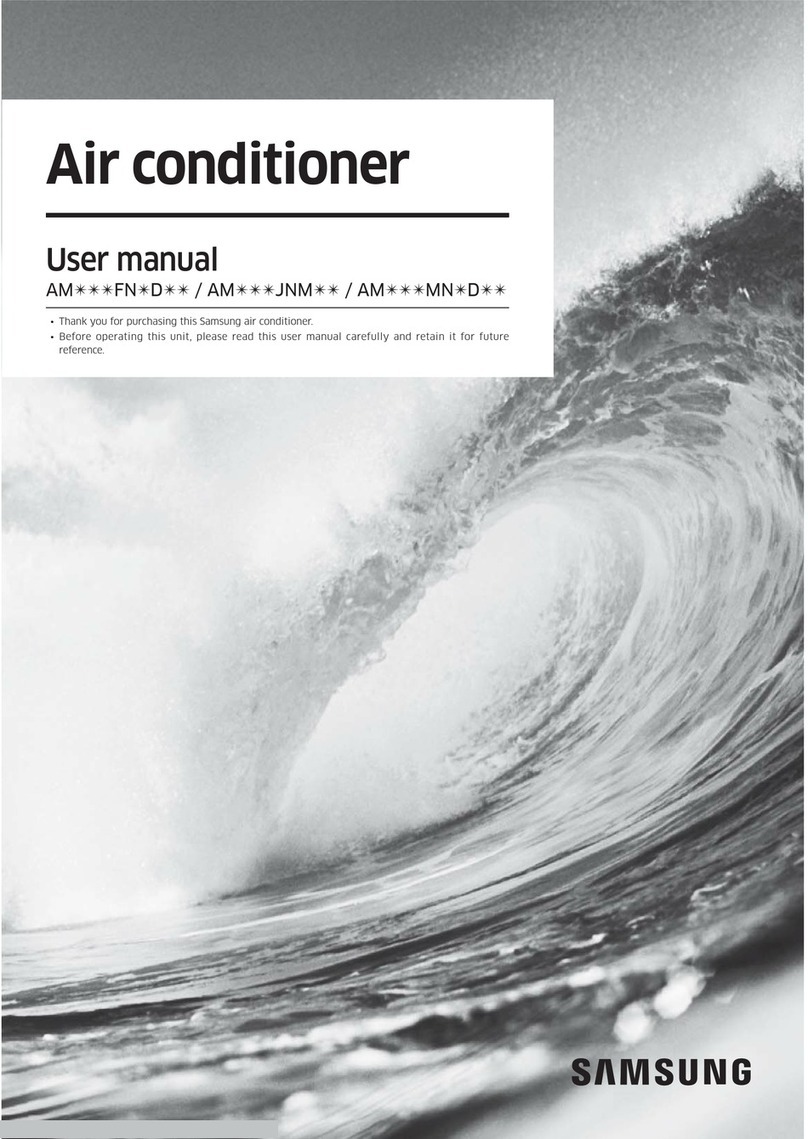
Samsung
Samsung AM***FN*D series user manual

Samsung
Samsung AR**HV5D series User's installation guide

Mitsubishi Electric
Mitsubishi Electric MS-GK36VAT operating instructions

Eberg
Eberg QUBO Q40HD instruction manual
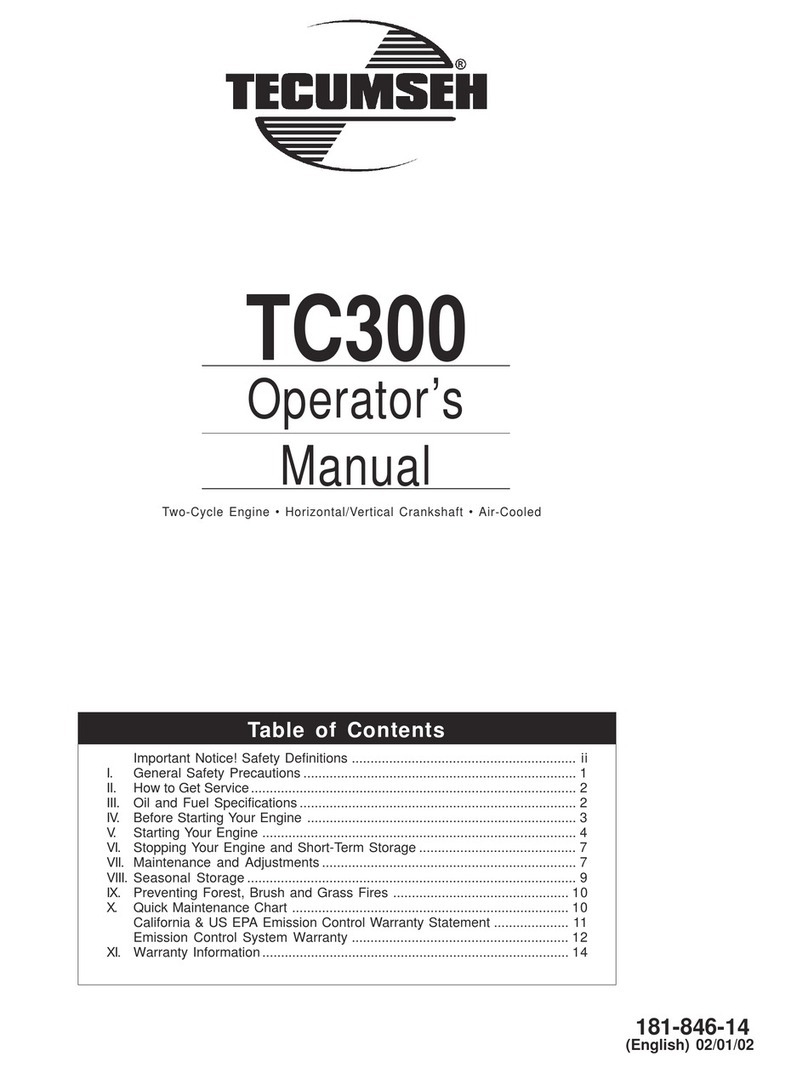
Tecumseh
Tecumseh TC300 SERIES Operator's manual
